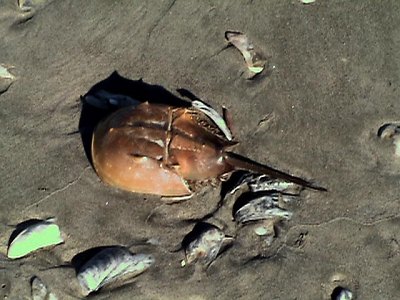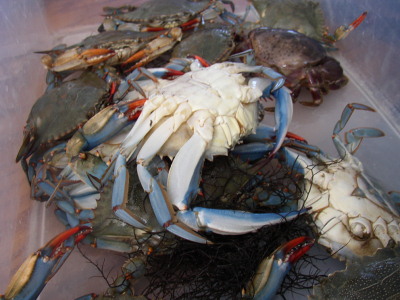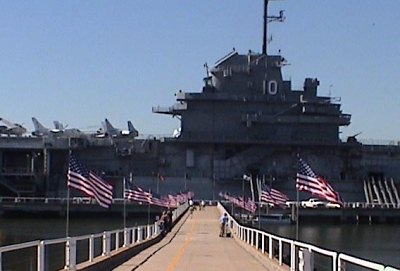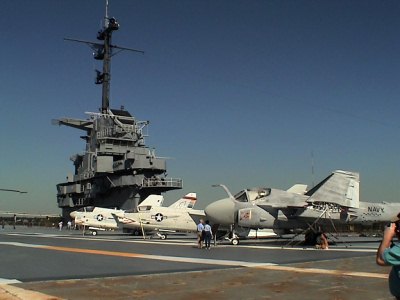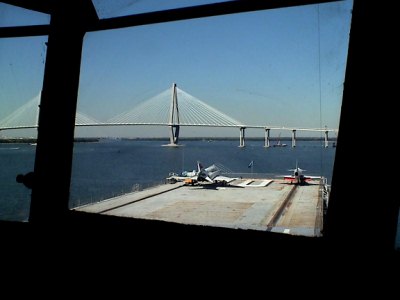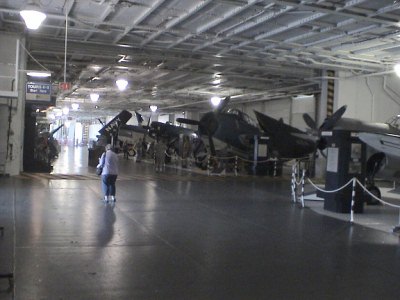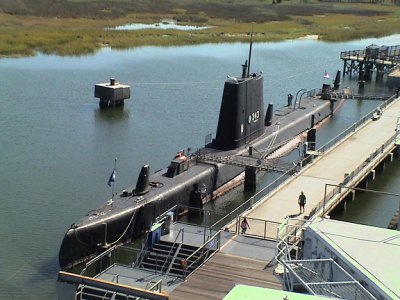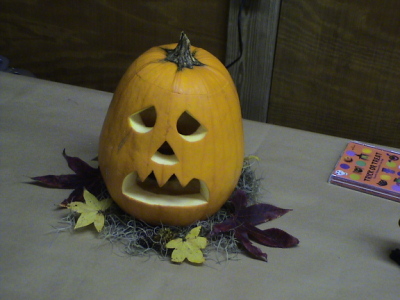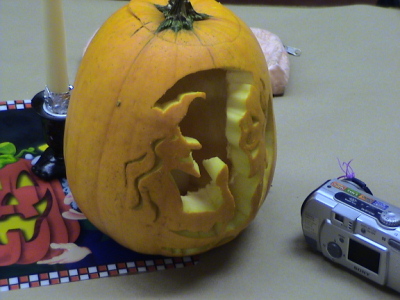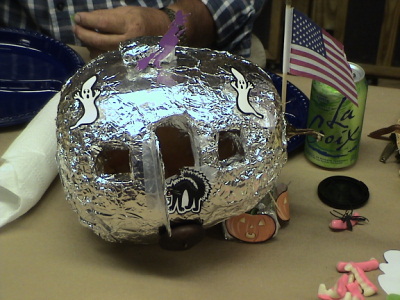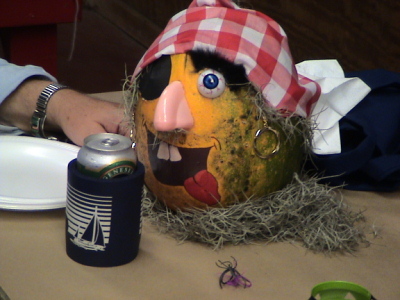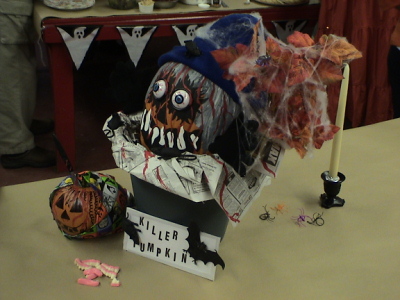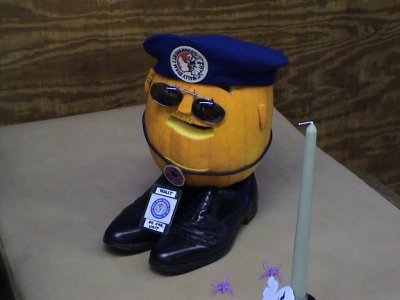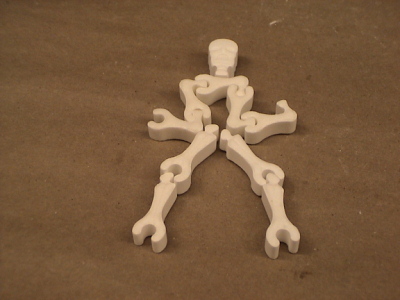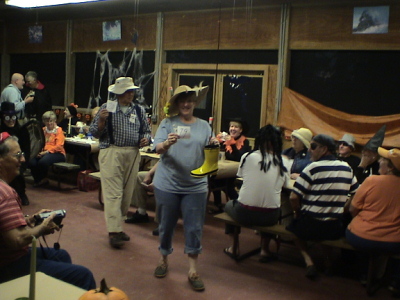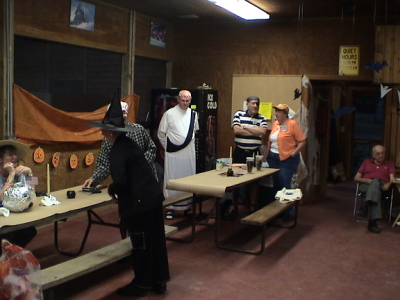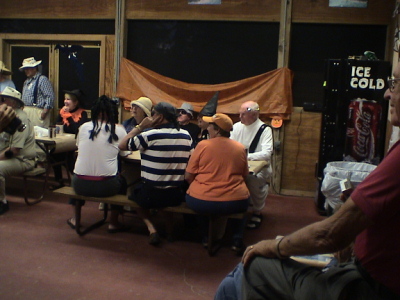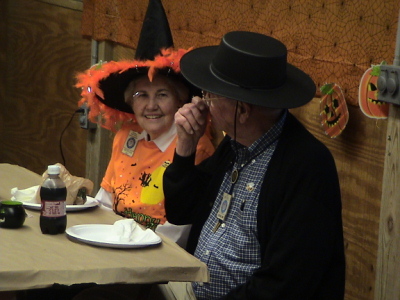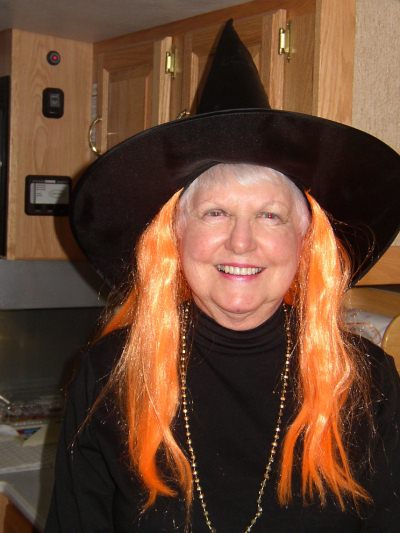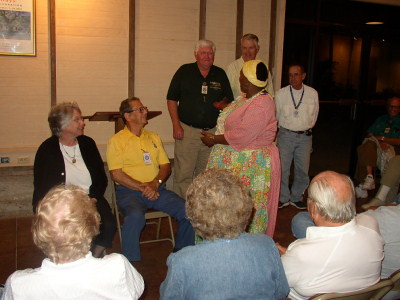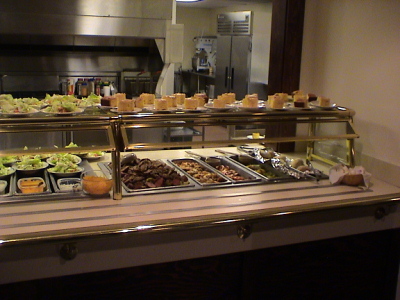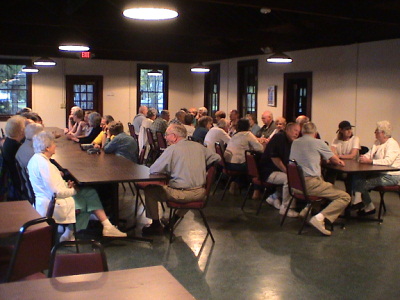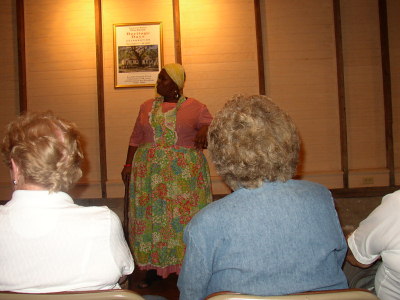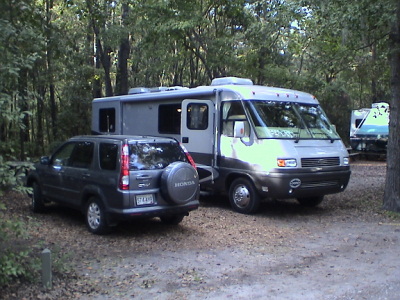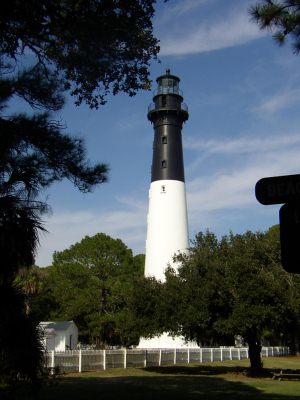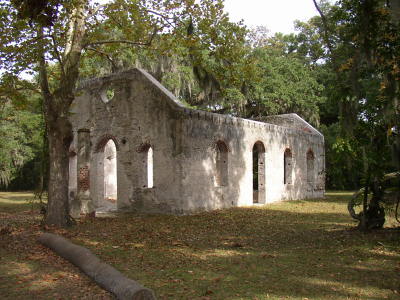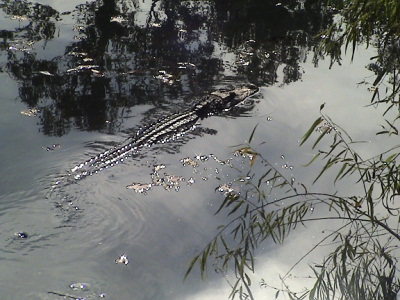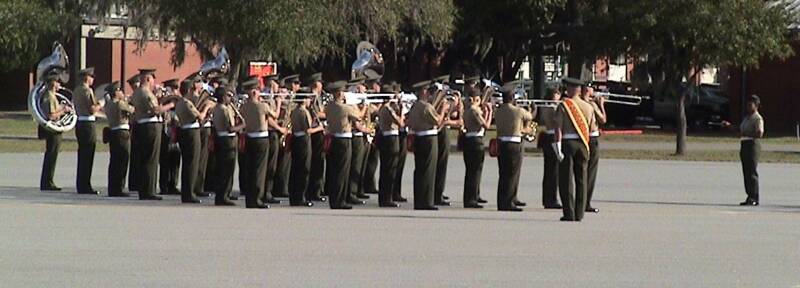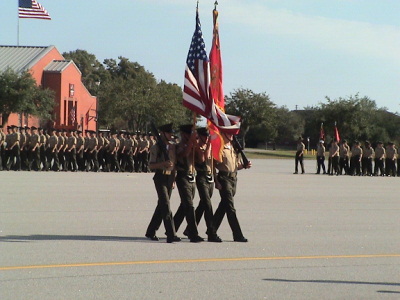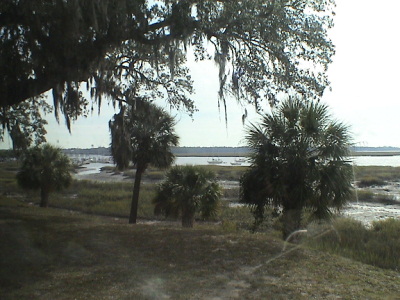When on active duty the Yorktown carried 380 officers and 3,088 enlisted men - and one dog. The air group consisted of 90 airplanes. The logistics of taking care of this "city afloat" are mindboggling. Not only food and fuel, but barbering, dentistry, discipline, entertainment, laundry, and all the other little things we call infrastructure - just amazing. The flight deck is almost 900 feet long, about the size of two city blocks, yet the ship was still able to go through the Panama Canal - barely. As impressive as the ship is, it is dwarfed by todays huge carriers.
October 31, 2006 - This was a free day - at least until the Haloween party set for later in the day.
November 1, 2006 - This was the day we moved from Charleston to Beaufort, South Carolina. Thinking we'd save time by going around downtown Charleston on I-526, we quickly became bogged down in a monumental traffic tie-up due to an
accident. A dump truck had turned over covering the highway with its load of dirt. The resulting blockage
caused traffic to back up about 10 miles. It took about two hours to drive two miles. Finally, we reached our
destination, the Tuck In The Woods Campground - in the "Gullah" language "Tuk In De Wood." About
fifteen miles east of Beaufort on St. Helena Island, the campground was in the heart of Gullah territory.
St. Helena Island is one of two remaining centers of the Gullah culture. We heard all about the Low Country
Lingo in an animated presentation after dinner by "Aunt Pearlie Sue" - a charming, heavyset black lady who
entertained us for over an hour.
The dinner we enjoyed was a Gullah meal in the lunch room of Penn Center, an educational facility begun in
1862 at the beginning of the Civil War. The plantation owners on St. Helena Island abandoned their holdings
when South Carolina seceded from the union, leaving the black slaves to fend for the themselves. These men
and women therefore became the first emancipated slaves. They survived by fishing, shrimping, and farming, carrying their produce on homemade sailboats along what we now call the Intercoastal Waterway to the markets in Savannah. The Gullah speaking blacks are called geechees. Gullah is a language that hybridizes West African dialects and West Indies English. It's a language that is impossible for anyone else to understand. More than just a language it broadly represents the island culture.
Frogmore stew or low country boil consists of sausage, shrimp, potatoes, corn, onions, and spices - more or less cooked together. It was good, but not nearly as good as the low country boil prepared by our Jesse Lewis a couple of years ago at our mountain house. The stew reflects the products of the freed slaves on the islands.
November 2, 2006 - The day began with a tour of the historic section of Beaufort. Spared by Sherman during his
march through Georgia and South Carolina in the Civil War, Beaufort sports over 120 antebellum homes. Our driver,
a white man who grew up on St. Helena Island speaking Gullah exclusively until he was 7 years old, filled us with
history of the area. The old homes were interesting, though they were not mansions like the old homes in Charleston
or Savannah. Many were two story frame buildings with large porches on both levels. Beaufort fronts on the
Interscoastal Waterway.
After a lunch of shrimp and grits, we drove out to Hunting Island. What a beautiful, pristine place. The entire island
is a state park with almost no development. Unusually tall trees - pines and cabbage palms - were thick. A
campground among the trees bordered the beach, which was white and wide. A lighthouse that was first built before
the Civil War, then rebuilt afterwards, is in the central part of the island.
Back on St. Helena Island, I took the picture of the ruins of an old tabby church building
that brought back memories of some of the old tabby ruins on St. Simons Island. Tabby
is a mixture of sand, lime, and oyster shells - all materials readily available in the early
days. Beaufort County claims to have the largest number of tabby ruins in the United
States. The gator was in our campground.
November 3, 2006 - The Marine Corps Recruit Depot on Parris Island was our
destination on this day. A bus picked us up at 7:45am at our campground on St.
Helena Island for a tour of the base. 640 recruits were graduating at 9:00am on the
parade ground in an hour long ceremony. It ended with the Marine Corps hymn and yells
of "Oorrah! Oorrah!" as the new marines broke for a reunion with their families and a ten
day leave at home.
After picking up an escort - a vivacious, young lady marine - we toured the base on the bus, then stopped for an excellent lunch at Traditions, a restaurant on base. Over 6,000 marine recruits are going through basic training at the Parris Island base at any given time. Officers, drill instructors, and other personnel bring the total up to about 8,000. They're graduating 500 - 600 new recruits each week. A similar number graduate each week at the other recruit depot in San Diego, California. As well as an impressive operation, it was encouraging to see so many young people ready to commit themselves to fighting for America's freedom.


